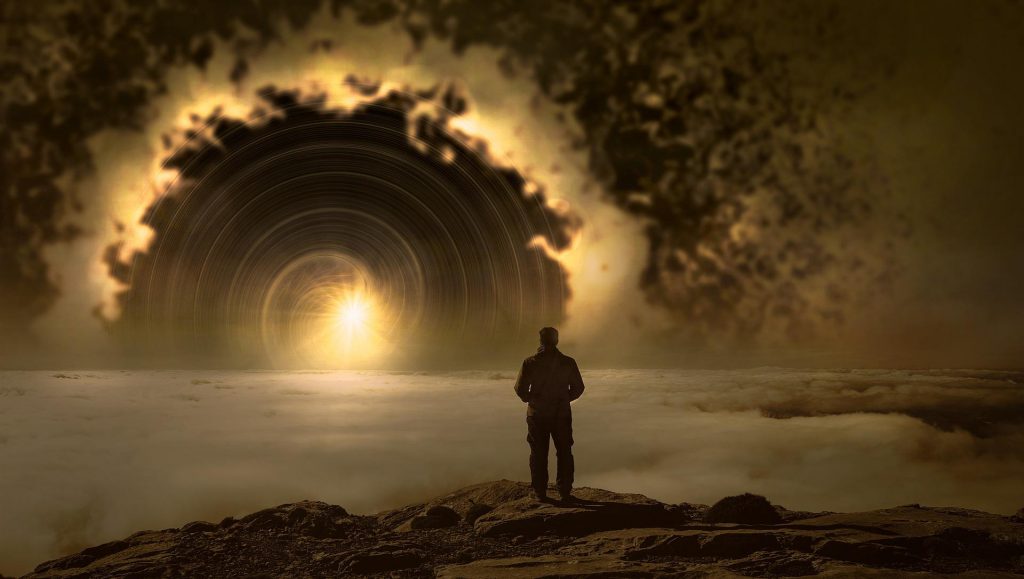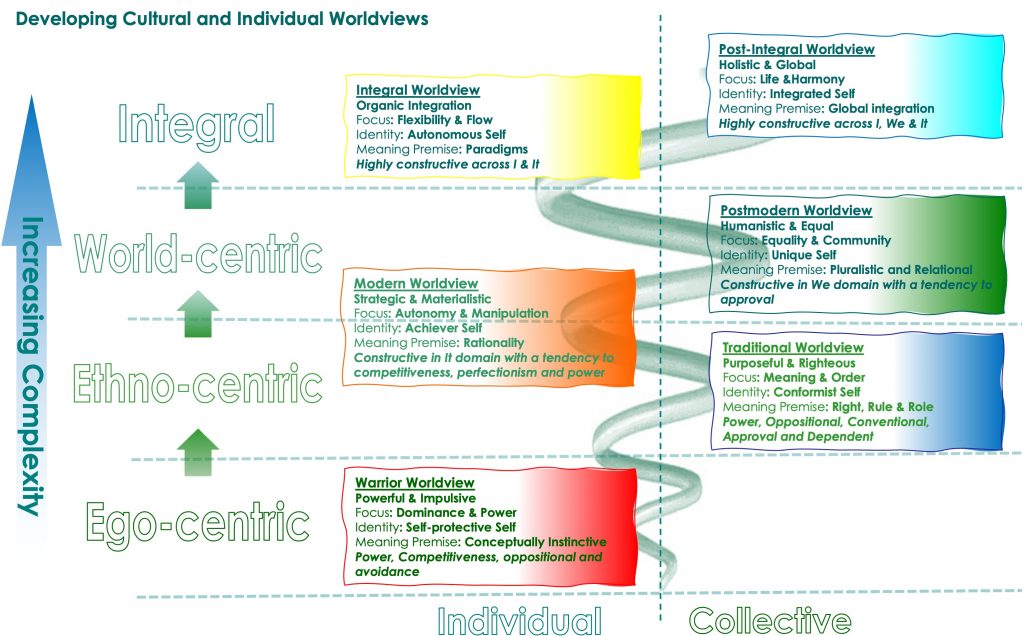
There are many theories about the psychosocial development of human beings but amongst those theories there is some commonality. To quote Ken Wilber in his book, ‘A Theory of Everything’:
“From Clare Graves to Abraham Maslow; from Deirdre Kramer to Jan Sinnott; from Jürgen Habermas to Cheryl Armon; from Kurt Fischer to Jenny Wade; from Robert Kegan to Susanne Cook-Greuter, there emerges a remarkably consistent story of the evolution of consciousness. Of course there are dozens of disagreements and hundreds of conflicting details. But they all tell a generally similar tale of the growth and development of the mind as a series of unfolding stages or waves.
Few of these developmental schemes are the rigid, linear, clunk-and-grind models portrayed by their critics. Development is not a linear ladder but a fluid and flowing affair, with spirals, swirls, streams, and waves—and what appear to be an almost infinite number of multiple modalities. Most of today’s sophisticated developmental theories take all of that into account, and—more important—back it with substantial research.”
The general underlying principle is as we grow psychologically there is a decrease in egocentrism, which is the inability to differentiate between ourself and another or, more specifically, the inability to assume or understand any perspective other than our own. In other words, in growing, we increasingly develop the ability to effectively appreciate, interpret and engage with others’ perspectives and worldviews. Overall this can be seen as a progression from egocentrism to ethnocentrism to world-centrism. It also speaks to an ability to deal with greater complexity.
We do not develop in a linear progression but in waves that transcend and include earlier waves and which ebb and flow over time. Progression from one wave to the next requires the creation of a healthy state in that wave together with breakdowns we do not seem to be able to overcome with our current worldview. We can also see staggered growth in terms of different aspects of life. For instance, we might be able to deal with great complexity in terms of our cognitive ability but have much lower ability in terms of relationships and ethics.
Spiral Dynamics is a sophisticated approach to psychosocial development. It was initially developed by Dr. Clare Graves who saw this development as “an unfolding, emergent, oscillating, spiraling process marked by progressive subordination of older, lower-order behaviour systems to newer, higher-order systems as man’s existential problems change.”
The Spiral Dynamics approach as set out in the diagram, is based on underlying spiral that is:
- A model of human emergence based on the assumption we have adaptive intelligence applying to both the individual and the collective;
- EIGHT levels of development – memes (value systems known as ‘vMemes’) – the diagram above starts at the third level;
- FOUR warm coloured vMemes – Beige, Red, Orange and Yellow – focus on self;
- FOUR cool coloured vMemes – Purple, Blue, Green and Turquoise – focus on the collective;
- Each vMeme comes into existence in response to our life circumstances and breakdowns and is more complex in nature;
- Each vMeme requires the vMemes lower on the spiral to evolve – Moving to a higher vMeme involves transcendence and inclusion – we cannot skip vMemes in our development;
- vMemes are broken into two broad layers – 1st Tier (vMemes 1-6) and 2nd Tier (vMemes 7&8);
- 1st Tier – Focus on survival level concerns – does not accept the value of the other vMemes;
- 2nd Tier – Works to create a healthy system that is inclusive of all vMemes;
- There is no ultimate wave of development – the spiral is expected to continue to develop;
- vMemes are systems within a person or group, not kinds of persons or groups.
The principles of the Spiral Dynamics approach include:
- Human nature includes a capacity for new vMemes to awaken without eliminating old ones;
- Shifting life conditions activate vMemes, which may emerge, surge, fade or return in response;
- The overall spiral is forged by a pendulum-like alternation between the self-expressive, internal controlled ‘me’ (Beige, Red, Orange & Yellow) and the self-sacrificing, externally anchored ‘we’ (Purple, Blue, Green & Turquoise);
- Each vMeme comes in phases, either in personal passage or historic epoch, like waves on the beach, entering as a surge, dominating the scene as a strong peak, and then exiting from prominence to be replaced by another
- vMemes emerge as we enrich our worldview from egocentric (Beige, Purple & Red) to ethnocentric (Blue & Orange) to world-centric (Green, Yellow & Turquoise);
- The emergence of vMemes on the spiral is from lesser to greater complexity; and
- vMemes co-exist as mixtures. For instance, a generally consensual Green may activate their power seeking Red aspect in sports and call up an Orange achievement orientation in a marketing meeting.
Clearly there is much more to the Spiral Dynamics approach than outlined here and many sources available if you wish to explore this topic further.
Underlying adult human development is a process of learning and the embodiment of new habitual ways of observing and acting.
